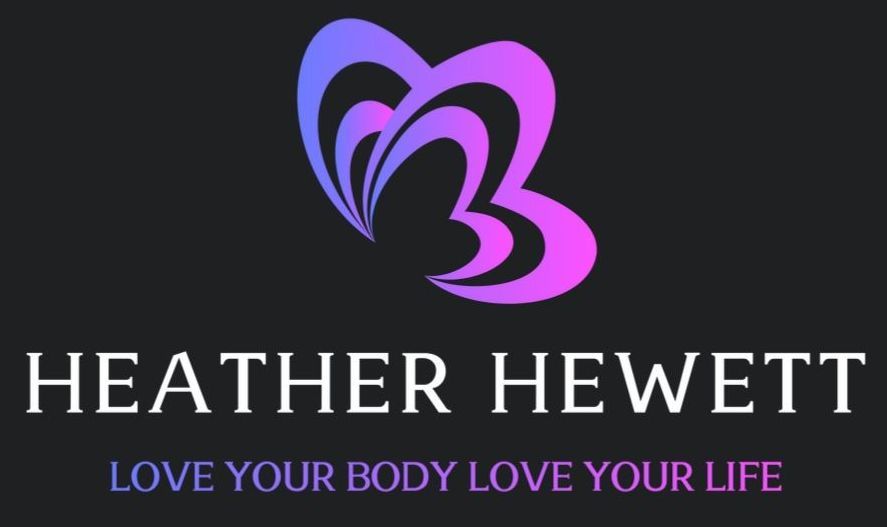Calm Your Nervous System Naturally With 5 Daily Practices
Long days, tight deadlines, nonstop pings, then family needs your full attention. If your chest feels tight or your mind buzzes at night, you are not alone.
When your nervous system is calm, your body shifts into rest and digestion. You think more clearly, sleep more deeply, and handle stress with more ease. Simple habits can nudge your vagus nerve, slow your breath, and reduce cortisol.
In this guide, you will learn five natural daily practices that fit a busy schedule. Each one is easy to try, requires little to no equipment, and builds steady stress relief over time. You can start today and feel a small but real shift.
Why Calming Your Nervous System Matters
You can only think clearly and sleep well when your body feels safe. A calm nervous system puts you in rest and digestion, so your heart rate slows, your breath deepens, and your brain stops scanning for threats. That shift is not fluffy wellness talk, it is how your biology works. Once you understand it, you can use simple stress relief techniques to reset your body during a busy day.
How Your Nervous System Works, In Simple Terms
Your autonomic nervous system runs in the background. It has two main settings:
- Sympathetic, also called fight or flight
- Parasympathetic, also called rest and digest
The vagus nerve acts like a brake pedal for your stress response. When you lengthen your exhale, hum, or relax your face and jaw, you send signals through the vagus nerve that say, you are safe. Your HPA axis (hypothalamus, pituitary, adrenals) also gets the message, so cortisol drops.
Here is a quick snapshot you can use to spot your current state.
State
Body Signals
Common Triggers
Helpful Reset
Sympathetic (fight or flight)
Fast breath, tight chest, racing thoughts
Deadlines, conflict, constant alerts
Slow breathing, longer exhale, grounding
Parasympathetic (rest and digest)
Steady heart rate, warm hands, calm focus
After a meal, quiet time, gentle movement
Keep routines, light stretching, soft music
A calm state does not mean you never feel stress. It means you return to balance faster after stress. That skill is trainable.
The Cost of Staying Revved Up
When you stay stuck in fight or flight, your body pays for it. You might notice:
- Shallow breathing and tension in your neck or jaw
- Irritable mood, brain fog, or trouble focusing
- Upset stomach, reflux, or appetite swings
- Light sleep or waking at 3 a.m.
- Afternoon crashes followed by late-night wired energy
Over time, constant stress can throw off hormones, digestion, and immunity. Inflammation rises. You get sick more often and recover slowly. Your pain threshold drops. Calming your nervous system breaks this cycle and protects your energy, mood, and long-term health.
Benefits You Can Feel Quickly
Small shifts add up. When you practice natural ways to calm nerves, you can feel changes within minutes.
- Clearer thinking: Blood flow returns to the thinking part of your brain, so problem solving gets easier.
- Steadier mood: Less cortisol and more GABA and serotonin help you feel even and grounded.
- Better sleep: A calm system helps you fall asleep faster and wake less during the night.
- Digestive relief: Rest and digest boosts stomach acid, enzyme release, and gut movement.
- Lower tension: Muscles uncoil, your jaw releases, and your breath deepens.
Research shows slow breathing and mindfulness can activate the vagus nerve and increase parasympathetic activity. That translates to lower heart rate, lower blood pressure, and a calmer mind.
Quick check you can try today:
- Rate your stress from 1 to 10.
- Do 5 cycles of slow breathing, in for 4 counts, out for 6 counts.
- Rate your stress again. Most people drop 1 to 3 points in two minutes.
Long-Term Payoff You Can Trust
Consistency trains your nervous system the way strength work trains your muscles. With daily practice, you build:
- Stress resilience: You recover faster after tough moments.
- Higher HRV: Heart rate variability often improves, a sign of better adaptability.
- Lower baseline cortisol: Your day feels smoother with fewer spikes.
- Stronger mind-body link: You notice earlier when tension rises, so you can course-correct.
Think of it like teaching a smoke alarm to stop going off for burnt toast. It still protects you, it just stops overreacting.
How to Tell You Are Calming Down
You do not need a device to see progress. Use simple signs you can track.
- Warm hands and feet within a few minutes of slow breathing
- Softer jaw and shoulders, easier full belly breath
- Slower pulse, about 6 to 10 breaths per minute feels natural
- Falling asleep faster, even by 5 to 10 minutes
- Fewer stress spikes from everyday triggers
If you like data, note two or three cues in a journal. For example, bedtime, time to fall asleep, and morning mood. Review weekly to see trends.
A Quick Story to Make This Real
A client who runs a small team felt burnt out by midweek. She started with one practice, 3 minutes of longer exhales after lunch. In two weeks, her afternoon headaches faded and she stopped waking at 3 a.m. She later added a brief body scan before bed. She still had busy days, but her body stopped living on high alert. That calm felt like getting her bandwidth back.
Why This Sets Up Your Daily Practices
You do not need an hour of yoga to reset your nervous system. Short, consistent stress relief techniques teach your body what safety feels like. You build a repeatable pattern: feel a cue, use a tool, return to calm. Keep the goal simple. Aim for small daily wins that stack into real change.
5 Daily Practices to Calm Your Nervous System Naturally
Use these daily habits to shift out of fight or flight and into rest and digest. Each one is simple, free, and easy to repeat. Pair two or three throughout your day to lower stress, ease muscle tension, and sleep better. Consistency matters more than intensity, so keep it short and steady.
Deep Breathing Exercises for Quick Relief
Breathing is your fastest switch from stress to calm. Slow, controlled breaths tell your vagus nerve that you are safe. This activates your parasympathetic system, so your heart rate drops and your muscles release. Research on slow breathing shows lower heart rate and improved heart rate variability, a marker of calm.
Try two core methods that work in minutes:
- Box breathing: A steady 4-4-4-4 pattern that anchors focus.
- Diaphragmatic breathing: Belly-first breathing that fills the lower lungs.
How to practice box breathing:
- Sit comfortably, feet grounded, shoulders soft.
- Inhale through your nose for 4 counts.
- Hold for 4 counts.
- Exhale through your nose for 4 counts.
- Hold for 4 counts, then repeat.
How to practice diaphragmatic breathing:
- Place one hand on your chest and one on your belly.
- Inhale through your nose for 4 counts, belly rises first.
- Exhale for 6 counts, belly falls.
- Keep your chest as still as you can.
Do 5 minutes, twice a day. Morning and late afternoon work well. If you are new, sit in a chair with back support and keep your jaw and tongue relaxed. If 4 counts feels tight, start with 3 and build up. You can also extend the exhale by one or two counts to deepen the calming effect.
Beginner tips:
- Close your eyes or soften your gaze to reduce visual noise.
- Use a timer or a simple breathing app to keep rhythm.
- Pair with a cue, like making coffee or parking your car.
Quick proof you can feel: take your pulse before and after 3 minutes of box breathing. Most people notice fewer beats per minute and a calmer mood.
Mindfulness Meditation to Quiet Your Mind
Mindfulness trains your attention to return to the present, which reduces mental noise and stress loops. Regular practice changes brain patterns linked to worry and reactivity. Studies show mindfulness can lower cortisol, improve emotional balance, and support better sleep.
Two beginner friendly options:
- Guided meditation: Listen to a short audio that leads you through the process.
- Body scan: Move attention from head to toe, noticing and releasing tension.
Basic steps for a 5 to 10 minute session:
- Find a quiet spot and sit upright, or lie down if your back feels tight.
- Set a soft timer.
- Focus on your breath at the nose or the rise and fall of your belly.
- When your mind wanders, notice it, then gently return to the breath.
- Finish by feeling your feet on the floor before you stand.
Helpful resources to start:
- Free apps: Insight Timer, UCLA Mindful, Healthy Minds Program.
- Short videos: Search “5 minute body scan” or “breath focus meditation.”
- Tip: Use the same track daily to build a habit.
Make it practical:
- Try 3 minutes after lunch or before bed.
- If you fidget, keep a small object in your hand and notice its texture.
- Mark a daily streak on your calendar for motivation.
Real life example: a client used a 6 minute body scan in the car after work, before walking inside. Within a week, evening arguments dropped and bedtime felt smoother.
Trauma-Informed Stretching to Release Tension
Anxious thoughts often show up in the body as tightness — shoulders pulled up, jaw clenched, or a chest that feels heavy. Trauma-informed stretching helps release that stored tension gently, without forcing or pushing past your limits. It’s not about flexibility or performance; it’s about safety, presence, and reconnecting with your body in small, mindful ways.
Each movement becomes a way to remind your nervous system: you are safe now. You learn to notice sensations, respect your boundaries, and let your body lead instead of your mind. Over time, this builds trust and resilience from the inside out.
How to Begin:
Start in a quiet space where you feel safe and supported. Move slowly, breathing naturally. Let comfort—not intensity—be your guide.
Try these grounding stretches:
- Neck and Shoulder Release: Slowly roll your shoulders up, back, and down. Let out a long exhale as your shoulders drop.
- Chest Opening Stretch: Place your hands behind you on a chair or wall, gently lift your heart, and feel your breath expand your chest.
- Seated Side Bend: Sit tall, one hand resting on your chair, other arm reaching overhead. Feel the length along your ribs and breathe into that space.
- Supported Forward Fold: Sit or stand, hinge gently at the hips, resting your forearms on your thighs or a pillow. Let your head hang and soften your jaw.
Safety Tips:
- Keep movements small and slow—there’s no need to “stretch deeply.”
- Notice sensations and emotions that arise. If anything feels overwhelming, pause and take a few steady breaths.
- End each stretch by grounding: press your feet into the floor and notice your surroundings.
A few minutes of trauma-informed stretching each day can help unwind muscle tension, calm racing thoughts, and teach your body what safety feels like again. It’s less about “doing” and more about listening—a gentle reset for both body and mind.
Herbal Teas and Natural Supplements for Support
Herbal support can add a calming nudge, but think of it as a daily ritual, not a cure. Pair tea or supplements with breathing or a short walk for best results. Always check with your doctor if you take medications, are pregnant, or have health conditions.
Two well known options:
- Chamomile tea: Often used for stress and sleep. It contains apigenin, a compound that may bind to calming receptors in the brain. Some studies suggest it can reduce mild anxiety symptoms.
- Ashwagandha: An adaptogenic herb that may help your body balance stress hormones like cortisol. Research has reported reduced perceived stress and improved sleep in some adults.
How to use:
- Chamomile tea: Steep 1 to 2 tea bags or 1 tablespoon of loose flowers in hot water for 5 to 7 minutes. Sip in the evening or after a tough meeting.
- Ashwagandha: Common daily doses range from 240 mg to 600 mg of a standardized extract. Start low and see how you feel. Take with food to avoid stomach upset.
Safety notes:
- If you have ragweed allergies, test chamomile carefully.
- Ashwagandha may interact with thyroid or sedative medications.
- Track how you feel for two weeks before adjusting the dose.
Make it a ritual:
- Pair your tea with 3 minutes of box breathing.
- Keep ashwagandha with your breakfast routine.
- Write one line in a journal while you sip to signal your brain that you are off-duty.
Nature Walks and Grounding to Reconnect
Time in nature resets your senses. Green spaces tend to lower cortisol, quiet mental chatter, and steady your heart rate. Forest bathing research points to improved mood and mental clarity after short visits to parks or wooded paths.
Simple ways to ground daily:
- Take a 10 to 15 minute walk in a park, on a tree lined street, or near water.
- Notice three sights, two sounds, and one smell. This anchors attention in the present.
- If it is safe and clean, try walking barefoot on grass or sand for a minute to feel direct contact with the ground.
Urban adaptations:
- Sit on a park bench with your phone on airplane mode.
- Stand under a tree, look up at the leaves, and match your breath to the sway.
- Keep a small plant on your desk and take micro breaks to look at it for 30 seconds.
Quick routine you can repeat:
- Step outside and pause, feet grounded.
- Inhale for 4 counts, exhale for 6 counts, five times.
- Walk slowly and scan your environment for colors and shapes.
- Finish by placing a hand on your chest, one on your belly, and take one deep breath.
Keep it consistent. Even short contact with nature stacks up. Most people feel calmer, more clear, and less reactive after a week of daily walks.
Have you tried any of these practices? Share what helps you most so others can learn from your experience.
Tips to Make These Practices Part of Your Routine
You already know what to do. The win now is turning these natural stress relief techniques into habits you repeat without thinking. Keep it simple, keep it short, and use cues you already have in your day.
Build a Tiny Starter Plan
Start small so your brain says yes.
- Pick one practice for morning, one for evening.
- Example: 3 minutes of box breathing after your coffee, 5 minutes of Legs Up the Wall before bed.
- Set a 7-day goal, not a forever goal. Review on day 8 and adjust.
Stack Habits to Anchors You Already Do
Tie calming actions to routines you never skip.
- Pair breathing with locking your car, tea with shutting your laptop, a body scan with brushing your teeth.
- Use visual prompts. Place a sticky note on your mug that says, exhale longer.
- Keep tools close. Stretching mat by the couch, tea bags in your desk drawer, headphones in your bag.
Track and Adjust Without Pressure
Make the process visible so it sticks.
- Use a tiny tracker: date, practice, minutes, mood before and after.
- Look for trends, not perfection. Aim for most days, not every day.
- If you miss a day, restart the next day. No catch-up needed.
Plan for Busy or Low-Motivation Days
Have a backup that takes 60 seconds.
- Do 5 slow breaths with extra long exhales.
- Try a 30-second shoulder roll and jaw release.
- Step outside, look at the horizon, and name three colors you see.
Protect the Space With Boundaries
Reduce noise so your nervous system can shift.
- Silence non-urgent alerts during your practice window.
- Tell a partner or family member your 5-minute time block.
- Use airplane mode and set a timer so you can relax into it.
Small, consistent reps build a calmer baseline. Keep your tools light, your cues clear, and your wins easy to spot.
Conclusion
You now have five simple tools for calming your nervous system, deep breathing, mindfulness, trauma informed stretching, herbal support, and short nature walks with grounding. Used daily, these stress relief techniques lower tension, steady your mind, and help you sleep and digest better.
Small steps add up. Pick one practice today, try it for five minutes, then share your experience in the comments so others can learn from you.
FAQ
What are the five daily practices you can start right away?
- Slow breathing with longer exhales
- Gentle movement, like a 10 to 20 minute walk or stretching
- Morning light exposure for 5 to 15 minutes
- Steady meals with protein, fiber, and healthy fats
- Short rest breaks, like progressive muscle relaxation or a body scan
How much time do you need each day?
Aim for 30 to 45 minutes total, spread across the day. Start smaller if needed. Even 2 to 5 minute blocks help when done often.
What’s a simple breathing exercise that actually works?
Try 4-6 breathing. Inhale through your nose for 4 seconds, exhale for 6 seconds. Keep your ribs and belly soft. Practice for 3 to 5 minutes, 2 to 3 times a day.
When should you use box breathing vs longer exhales?
Use longer exhales when you feel keyed up. It signals your body to settle. Use box breathing (inhale 4, hold 4, exhale 4, hold 4) when you want steady focus. Skip long holds if you feel lightheaded or are pregnant.
How does morning light calm your nervous system?
Morning light sets your body clock, which supports cortisol balance and better sleep. Go outside within an hour of waking for 5 to 15 minutes. If it is dark or cloudy, spend more time or sit by a bright window. Sunglasses reduce the effect.
What movement works if you sit all day?
Take a 5 minute walk every 60 to 90 minutes. Add gentle mobility, like neck circles, shoulder rolls, and hip openers.
What should you eat to support a calmer system?
- Include protein at each meal, about a palm-size serving
- Add fiber from vegetables, fruit, beans, or whole grains
- Use healthy fats, like olive oil, nuts, or avocado
- Do not skip meals, aim for steady blood sugar
Stay hydrated. Even mild dehydration can raise stress levels.
Should you cut caffeine?
You do not have to quit, but set limits. Keep total caffeine under 200 to 300 mg per day, earlier in the day. Avoid it 8 to 10 hours before bed. If you get jitters, halve your dose or switch to green tea.
Do cold showers help, and who should skip them?
Brief cold exposure can boost alertness and may build stress tolerance. Start with 15 to 30 seconds at the end of a warm shower. Skip cold exposure if you have cardiovascular issues, are pregnant, or feel dizzy. Warmth and slow breathing work well too.
What quick practices can you use at your desk?
- 1 minute of 4-6 breathing
- 10 slow neck turns with soft shoulders
- Hand on chest and belly, feel 5 breaths
- 60 second body scan, relax your jaw, tongue, and brow
- Humming or gentle gargling to stimulate the vagus nerve
How do you know it is working?
You fall asleep faster, wake up less, and feel less on edge. Your resting heart rate may drop, and you recover faster after stress. Track simple notes on sleep, mood, and energy for two weeks.
What if anxiety spikes at night?
Dim lights 2 to 3 hours before bed. Avoid heavy meals and screens close to bedtime. Try 10 minutes of reading, a warm shower, or 5 minutes of longer-exhale breathing. If your mind races, write a short to-do list for tomorrow.
Can these practices replace therapy or medication?
They support your nervous system, but they do not replace professional care. If anxiety, panic, or low mood disrupt daily life, talk with a licensed clinician.
How soon will you feel a difference?
Many people feel calmer after one session of slow breathing or a walk. Deeper changes build in 2 to 4 weeks with daily practice. Be consistent, track your wins, and adjust as needed.
Any safety tips before you start?
Stop if you feel faint, numb, or unwell. Do not hold your breath for long if you have heart or lung issues. If you have a medical condition, are pregnant, or take medication that affects blood pressure, check with your doctor first.
How can you make these habits stick?
Pair each practice with a daily cue, like after coffee or lunch. Keep it short at first, then add time. Set reminders, prepare walking shoes, and keep water nearby. Celebrate small streaks to build momentum.
About the Author
Heather M. Hewett is a Board-Certified Traditional Naturopath and Clinical Nutritionist with over 22 years of experience in holistic health and wellness. She is also a certified somatic trauma therapist and the author of Natural Health Simplified. Heather specializes in gut microbiome nutrition, weight loss, and somatic emotional regulation, offering an integrated approach that fosters emotional resilience and autonomy.
Having personally overcome challenges such as binge eating, a 100-pound weight gain, and autoimmune conditions like Hashimoto's Thyroiditis, Fibromyalgia, and Sheehan's Syndrome, Heather brings a compassionate and experiential perspective to her work. Her journey of transformation has led her to help others, particularly highly sensitive and neurodivergent individuals, reclaim their health and happiness.
Through personalized one-on-one coaching and group programs like "Love Your Body, Love Your Life!", Heather empowers clients to build self-awareness, develop emotional regulation tools, and cultivate emotional resilience. Her approach combines science-backed principles with a nurturing environment, guiding individuals towards a life filled with vitality and authenticity.





